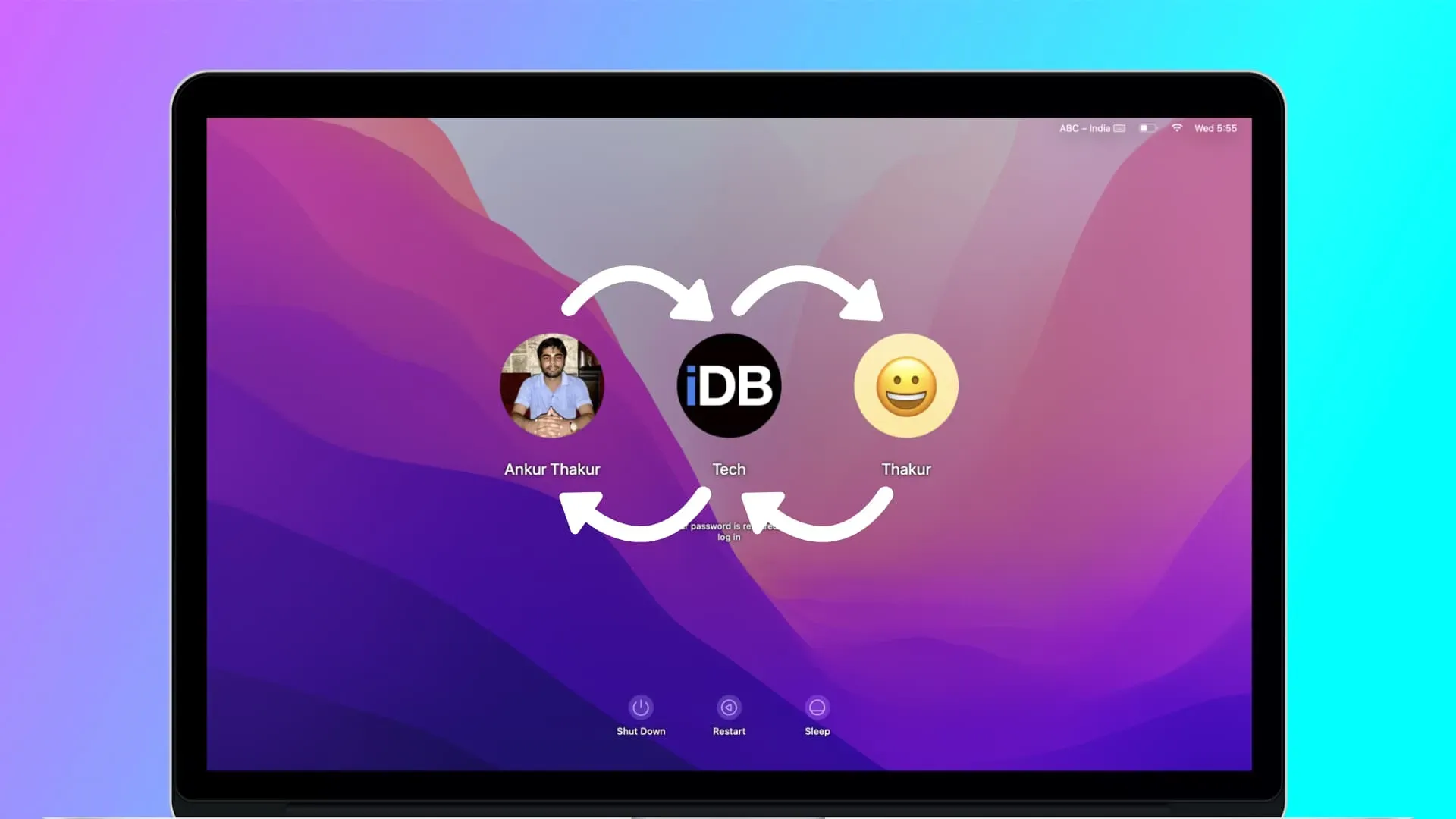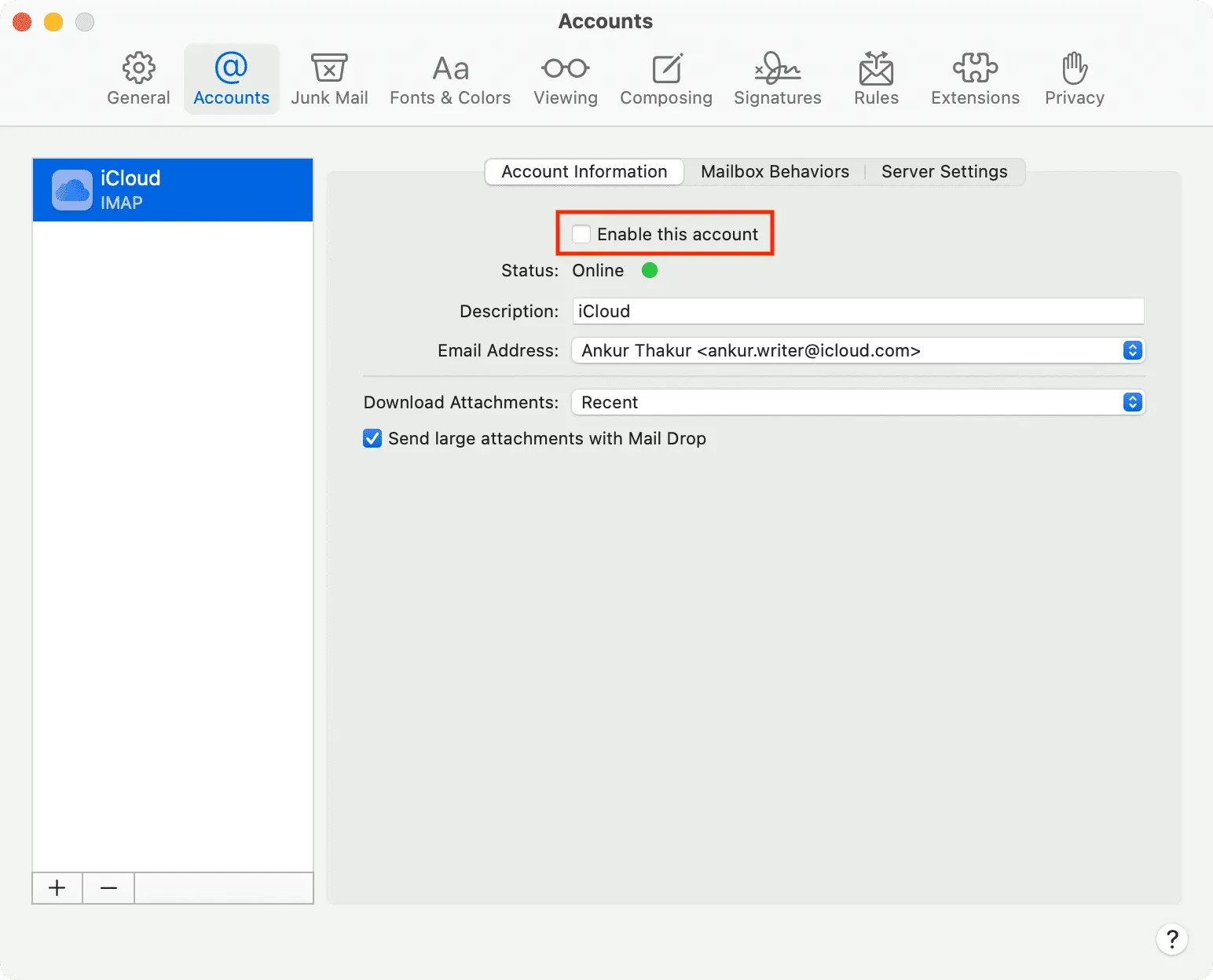With seamless cross-device integration, text messages, iMessages, phone calls, and FaceTime calls you receive on your iPhone can also appear on your Mac as long as both devices use the same Apple ID.
But you can tweak these settings to protect your privacy when you leave your Mac unattended so that other Mac users can’t see your messages, calls, or iPhone handoff requests.
To help you get through it all, this guide has some tips on how to make sure your iPhone messages and calls don’t show up on your Mac.

Create a new Mac user account
If other family members use your Mac, I recommend creating a new user account for each of them. Whenever they have to work on your Mac, they can log into their account while your main account with your Apple ID remains separate and password protected.
Tip: macOS supports Shared Folder, which makes it easy to share files between different accounts.

If you create a new user account on your Mac, you won’t have to follow most of the tips below. If you’re not creating a new account because you want all of your files to remain accessible to others who use your Mac, keep reading to prevent iPhone confidential alerts from reaching your Mac.
Stop Calls from iPhone to Mac
Standard phone calls
Have you ever received a call on your iPhone and your nearby Mac also called and showed a notification? If this bothers you, you can turn it off by going to iPhone Settings > Phone > Calls on Other Devices. From here, turn off the toggle next to your Mac’s name, or disable the feature entirely by turning off “Allow calls on other devices.”
FaceTime calls
You can use FaceTime through your phone number, Apple ID email address, or any other email address you’ve added.
Because your iPhone and Mac use the same Apple ID, if someone calls you on FaceTime, your iPhone and Mac will display that incoming call. But you can easily put a stop to it by signing out of FaceTime on your Mac, or using different phone numbers and email addresses for FaceTime on your Mac and iPhone.
Option 1: Sign out of Apple ID in FaceTime on Mac. Open the FaceTime app and in the menu bar, click FaceTime > Preferences or Preferences. Now click Sign Out next to your Apple ID.

Option 2: Use different settings for incoming FaceTime calls on iPhone and Mac. On iPhone, go to the Settings app > FaceTime. On a Mac, open FaceTime and click FaceTime > Preferences or Preferences. Now notice which phone number and email addresses are listed under “You can be reached via FaceTime”on both devices. From here, if you see the same mobile number or email verified on both iPhone and Mac, uncheck one of them on your iPhone or Mac.
On my iPhone, I have chosen to receive FaceTime calls if someone calls FaceTime on my phone number. But if someone makes a FaceTime call to my email address, that call comes through to my Mac.
Prevent iPhone from sending messages on Mac
Disable iPhone Text Message Forwarding on Mac
Similar to calls, your iPhone SMS messages can also be forwarded to your other Apple devices such as Mac. To finish this off, go to iPhone Settings > Messages > Text Message Forwarding and turn off the toggle for this feature, or turn it off for your Mac only.
Disable iMessage sync
The iMessage conversations you have will show up on all your devices using the same Apple ID. If you don’t want your iPhone’s iMessages to appear on your Mac, sign out of iMessage on your computer. To do this, open the Messages app and on the top menu bar, click Messages > Preferences or Settings > iMessage. Now click Sign Out next to your Apple ID.
Use different email accounts
Having the same email accounts on iPhone and Mac can deliver new email notifications to your computer. You can stop this by using a different email account on your Mac:
- Open the Mail app and in the menu bar, click Mail > Preferences or Preferences.
- Go to the Accounts section.
- From here, select iCloud and uncheck “Enable this account”.
- Then click the plus button to add any other email account.

Exit your apps on Mac
Apps such as Telegram, WhatsApp, Twitter, Slack and more are available for both iOS and macOS. If you don’t want alerts from these apps to appear on your Mac, simply sign out or uninstall the app.
Turn off iCloud
Even if you don’t completely sign out of your Apple ID on your Mac, you can turn off certain iCloud features like Notes, Reminders, Calendars, iCloud Drive, etc. so their data and notifications don’t show up on your Mac.


